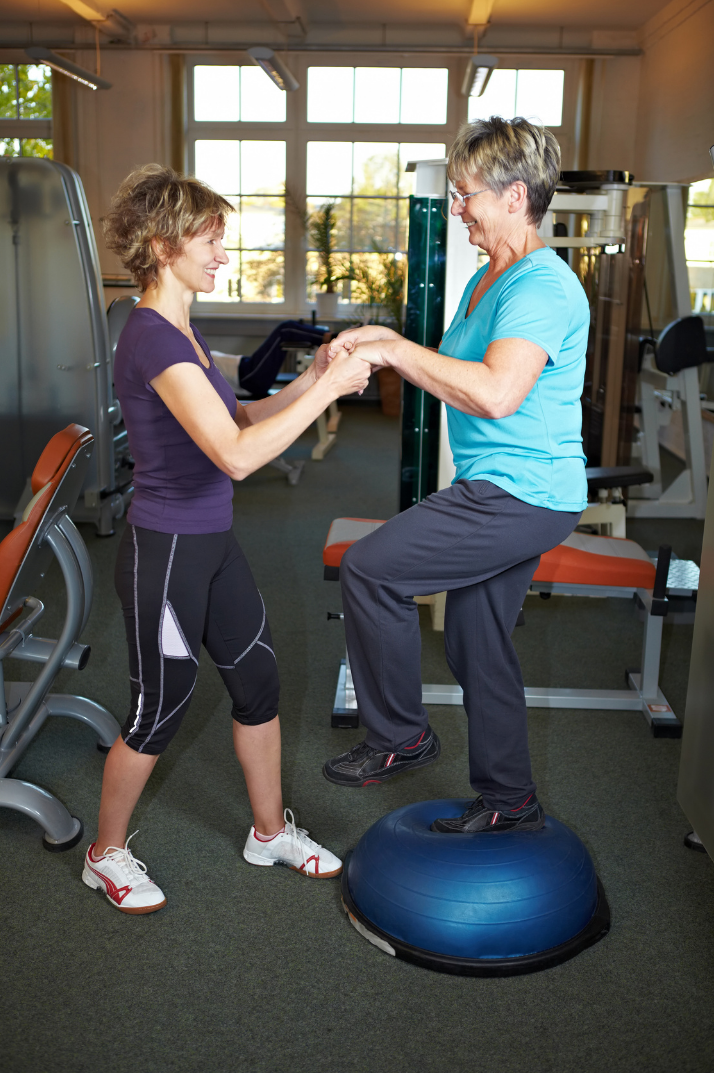Many of us take our balance for granted and go about our daily activities without much attention or fear. Unfortunately, this is not the case for everyone. Falls affect a significant number of older Australians and present a major challenge to health care providers and the health system.
At least one-third of community-living Australians aged 65 over fall every year.
Why does our fall risk increase as we age?
Proprioception is the perception or awareness of the position and movement of our body. As we get older, our neuromuscular system becomes less responsive, which means both balance and proprioception are impaired. The ability to react in a split second to prevent a fall becomes more difficult over time. The good news? Exercise can help!

Types of exercise for falls prevention
Exercise is a proven way to help prevent falls, by strengthening the muscles that keep us upright and improving our balance. Exercise can not only prevent or slow the decline of balance and proprioception, but can also help to improve it and gain back deficits. For the greatest benefit, both balance and strength training should be incorporated into structured exercise programs.
Some balance exercises you can incorporate into your daily routine may include:
- Sitting down and getting up from a chair without using your hands
- Walking heel to toe, like a tightrope walker – placing the heel of one foot just in front of the toes of the opposite foot each time you take a step
- Standing on one leg while brushing your teeth
- Standing on one foot while waiting in line at the grocery store
- Standing on an unstable surface
- Tai Chi Class
- Yoga Class
Strength training may include:
- Using your own body weight
- Medicine balls or sand bags
- Weight machines
- Light hand weights
- Resistance bands
- Carrying or moving heavy loads such as groceries
How much exercise?
 It is recommended that exercise programs should include both balance and strength training, be performed regularly for at least 2 hours per week. Try doing a little bit each day, even if it is for a few minutes a few times a day; while waiting in line at the grocery store or carrying groceries from the car into the kitchen. If your balance is poor or you’re not confident with any of the exercise, you should practice with a friend or family member next to you or position yourself next to a wall or sturdy benchtop.
It is recommended that exercise programs should include both balance and strength training, be performed regularly for at least 2 hours per week. Try doing a little bit each day, even if it is for a few minutes a few times a day; while waiting in line at the grocery store or carrying groceries from the car into the kitchen. If your balance is poor or you’re not confident with any of the exercise, you should practice with a friend or family member next to you or position yourself next to a wall or sturdy benchtop.
If you’re looking for guidance finding exercise that is safe and beneficial for you, an Accredited Exercise Physiologist is the health professional qualified to prescribe individualised exercise programs.
Contact Bodytrack Exercise Physiology to get started.
